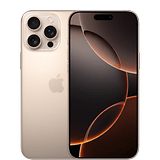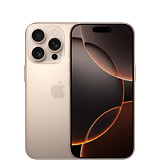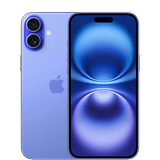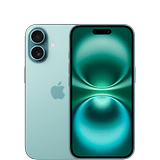Apple ‘s iPhone 16 series is represented by the traditional lineup of four models: iPhone 16, iPhone 16 Plus, iPhone 16 Pro, and iPhone 16 Pro Max. How do they differ in terms of features?
iPhone 16: display and design
The overall design is similar to the 2023 models, with a new camera module on the base models. The change to a smaller island means that the dual cameras are placed one above the other, rather than diagonally, as in the iPhone 13.
New to the base models is the Action button, which debuted on the iPhone 15 Pro, with customizable keyboard shortcuts. The Capacitive Camera Button is a new shortcut not only for the camera’s dual-stage shutter and zoom functions, but also for AI functions for scene recognition. Just like the Action button, the Camera Control button can launch third-party tools.
Meanwhile, Pro models continue to increase their gap with the base models. In 2024, not only will Apple switch to titanium, but Pro models will also receive larger displays – 6.3 and 6.9 inches (compared to 6.1 and 6.7 inches).
Thanks to their larger displays, the iPhone 16 Pro and Pro Max also have a slightly higher resolution, while maintaining the same 460 DPI pixel density. The Pro is the only model that has a 120Hz refresh rate (ProMotion, in Apple’s language), while the base models remain at 60Hz. Finally, confirming the rumors, the Pro models are now available in brown, along with black, white, and titanium.
Specifications of the iPhone 16 models
| Model |
iPhone 16 Pro Max
|
iPhone 16 Pro
|
iPhone 16 Plus
|
iPhone 16
|
|---|---|---|---|---|
| Photo |  |
 |
 |
 |
| Display |
|
|
|
|
| Chipset |
|
|
|
|
| Memory |
|
|
|
|
| OS |
|
|
|
|
| Camera |
|
|
|
|
| Selfie camera |
|
|
|
|
| Battery |
|
|
|
|
| Communication |
|
|
|
|
| IP certificate |
|
|
|
|
| Dimensions and weight |
|
|
|
|
Apple A18: more performance and AI
Apple has taken the iPhone 16 up two processor generations by adopting the Apple A18 chip. The six-core layout (2 productive and 4 efficient cores) is made on TSMC’s second-generation 3nm process, which provides the same performance but consumes 30% less power.
Apple promises 30% higher performance than the A16 used in the iPhone 14 and the base model 15, and 17% more memory bandwidth. And in gaming, the A18 should offer better performance stability thanks to an improved heat dissipation design. And the updated 5-core GPU now supports hardware ray tracing on base models, adding compatibility with the latest AAA titles from Capcom and Ubisoft.
For Pro models, Apple offers the A18 Pro chipset with a similar 2+4 core layout for improved performance and efficiency. The A18 Pro can achieve up to 15% more performance than the A17 Pro chip used in the iPhone 15 Pro, or 20% less power consumption at the same performance levels.
Other improvements in the A18 Pro over the A17 Pro include 15% faster AI processing and 20% faster GPU performance, and ray tracing rendering has been doubled.
Camera update for iPhone 16
The new Camera Control button can now be used for two-step focusing and quick settings in the Camera app. Apple is updating the base models with a more powerful ultra-wide-angle camera, with improved aperture (f/2.2) and autofocus.
The new parallel arrangement allows cheaper iPhone 16 models to include a “spatial capture” feature to create immersive photos and videos for viewing on Apple Vision Pro. In addition, the camera can focus at closer distances, allowing for macro photography. The Pro models have also received an ultra-wide upgrade: The 12-megapixel sensor has been replaced by a higher-resolution 48-megapixel sensor. Meanwhile, the Pro model now joins the Max model in terms of a telephoto lens with the same 5x zoom and tetraprism.
And with faster memory, more processing power, and an updated media encoder, iPhone Pro duo can now record 4K120 video (with all the usual HDR features and codecs) for super smooth slow-motion recording.
The selfie cameras retain their general specifications: 12 megapixels, f/1.9 aperture, and autofocus in the same Dynamic Island.
More artificial intelligence with iOS 18
The newest version of Apple’s mobile operating system that ships with iPhone 16 models offers more customization options, redesigned apps, and better privacy controls.
iOS 18 promises a variety of artificial intelligence features thanks to an improved Neural Engine. Thanks to many new tools, some of the AI features will appear in later versions by the end of the year. Siri is getting better at understanding natural language, context, and your data (messages, photos, appointments, etc.). As always, these features will be available first in English-speaking countries, with the U.S. launching in October, other English-speaking countries in December, and other languages throughout 2025.
Charging and autonomy
The new iPhones have larger batteries, but in typical Apple fashion, their capacity is not disclosed. For the iPhone 16 Pro duo, Apple promises “the best iPhone battery life ever”. For comparison, Apple claims 33 hours of video playback on the iPhone 16 Pro Max, 27 on the Pro, 27 on the 16 Plus, and 22 on the base iPhone 16.
As with the battery capacity, Apple did not reveal the maximum charging speed for its 2024 phones, but emphasized that MagSafe charging can reach 25W with a 30W power adapter. The iPhone 16 models are apparently also compatible with Qi2 and Qi chargers, which reach 15W and 7.5W respectively.
Prices and availability
| iPhone 16 Pro Max | iPhone 16 Pro | iPhone 16 Plus | iPhone 16 | |
|---|---|---|---|---|
| 1 TB | $1599 | $1499 |  |
 |
| 512 GB | $1399 | $1299 | $1199 | $1099 |
| 256 GB | $1199 | $1099 | $999 | $899 |
| 128 GB |  |
$999 | $899 | $799 |
| Colors. | Black White Brown Titanium |
Black White Brown Titanium |
Black White Blue Green Pink |
Black White Blue Green Pink |
The post How do the iPhone 16 models differ from each other first appeared on HiTechExpert.top.








